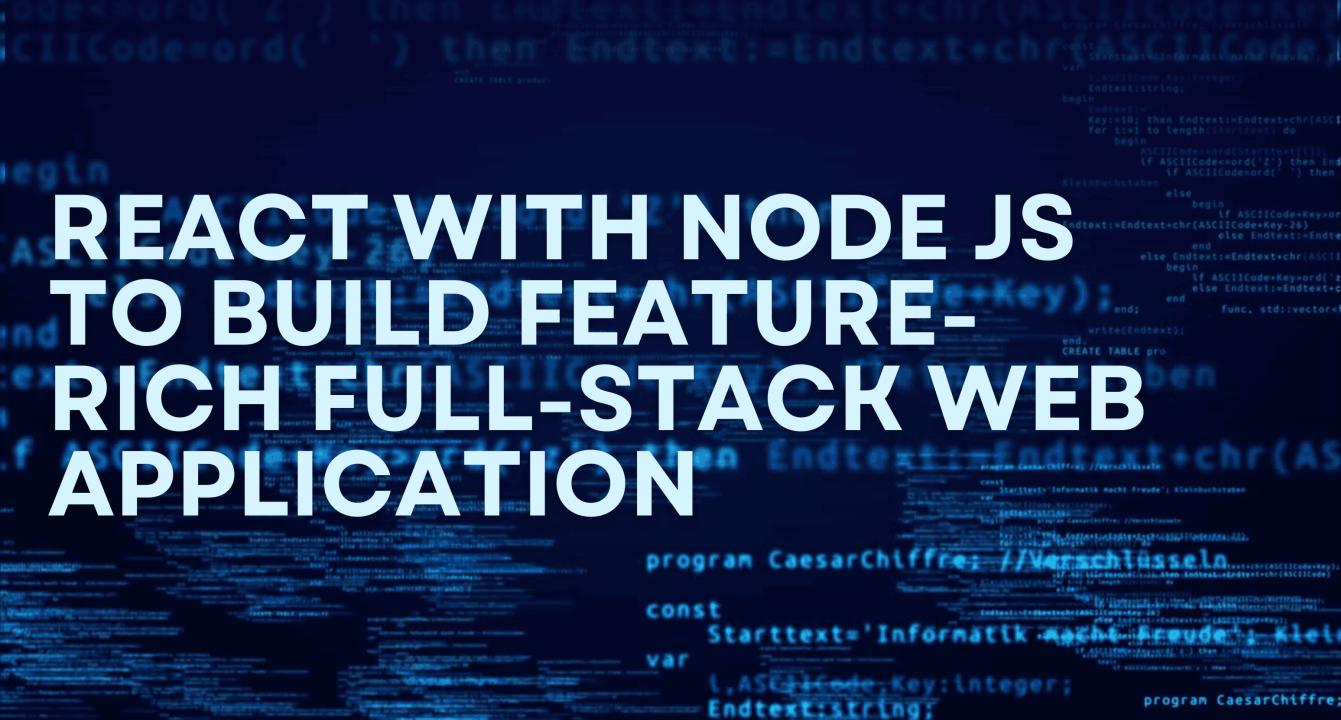Building modern web applications requires a powerful combination of tools that work well together. One of the most popular and effective combinations today is React (for the front end) and Node.js (for the backend). Together, they offer a seamless way to build full-stack applications using a single language — JavaScript.
React is a widely-used front-end JavaScript library designed for building dynamic user interfaces. Node.js, on the other hand, is a back-end runtime environment that executes JavaScript on the server side. Since both use JavaScript, they integrate seamlessly, providing developers with a unified language stack from front-end to back-end.
Why the React and Node.js Combo Works So Well
React and Node.js have become foundational tools in modern web development. One of their biggest advantages is the ability to build both the client and server sides of an application using JavaScript. This consistency simplifies development and boosts productivity.
With React, developers can build fast, interactive UIs. Its virtual DOM optimizes performance, allowing for smooth, real-time updates. Meanwhile, Node.js excels at handling asynchronous operations, making it ideal for managing multiple client requests simultaneously. When combined, these tools create a full-stack environment where both the interface and the server respond swiftly and efficiently.
For example, React fetches data from APIs built with Node.js and Express. When a user clicks a button or submits a form, React processes the interaction and sends a request to the Node server. The server handles the request, performs necessary operations, and returns a JSON response, which React uses to update the UI.
Real-World Example: A Task Management App
Imagine you're building a task management app like Trello. In this app, users can create boards, add tasks, drag and drop items, and collaborate with team members. React manages the UI components for boards, tasks, and user actions. Each interaction triggers an API call to the Node.js server.
The server, built with Express, defines routes such as /api/tasks, /api/users, and /api/boards. These endpoints handle requests from the client, interact with a database, and return data in JSON format. For data storage, a NoSQL database like MongoDB works well. For secure authentication, you can use JWT (JSON Web Tokens).
React’s component-based architecture keeps the UI modular and reusable. Components like TaskCard, BoardList, and Navbar each have specific roles and are easy to test. On the server side, Node.js manages business logic, input validation, and error handling, ensuring the application runs smoothly.
Best Practices for Building Full-Stack Applications
To build a successful React + Node.js application, keep these best practices in mind:
- Organize Your Codebase: Separate front-end and back-end code into folders like /client and /server. This improves maintainability and simplifies debugging.
- Prioritize Security: Always validate and sanitize user inputs to prevent SQL injection, XSS, and other vulnerabilities. Implement secure authentication methods like JWT or OAuth, and ensure HTTPS is used in production environments.
- Plan for Deployment: Host React applications on platforms like Vercel or Netlify. Deploy your Node.js server on services like Heroku, Render, or DigitalOcean. Protect sensitive data using environment variables for API keys, database credentials, and other secrets.
These are all essential concepts covered in any comprehensive full-stack developer course in Delhi, Noida, Mumbai, and other parts of India or elsewhere that focus on modern JavaScript stacks.
Features You Can Build with React + Node.js
This powerful stack supports a wide range of features found in modern web applications:
- User registration and login systems
- Real-time chat functionalityN
- Instant notifications
- Complex dashboards and analytics
- E-commerce platforms with cart, payment, and order tracking
- Blog systems with post creation, editing, and deletion
By integrating WebSockets, you can implement real-time features like chat and live updates. Additional features such as admin dashboards, file uploads, search filters, and pagination are also easy to implement with React and Node.js.
In The End
The React + Node.js stack is more than just a trend — it’s a proven, high-performance solution for real-world applications. Thanks to their shared JavaScript foundation, the learning curve is smoother for developers familiar with either front-end or back-end development.
Whether you're building a small side project or a complex enterprise application, this stack gives you the tools to build fast, scalable, and user-friendly apps. If you're just getting started with full-stack development, React and Node.js offer an excellent starting point.













